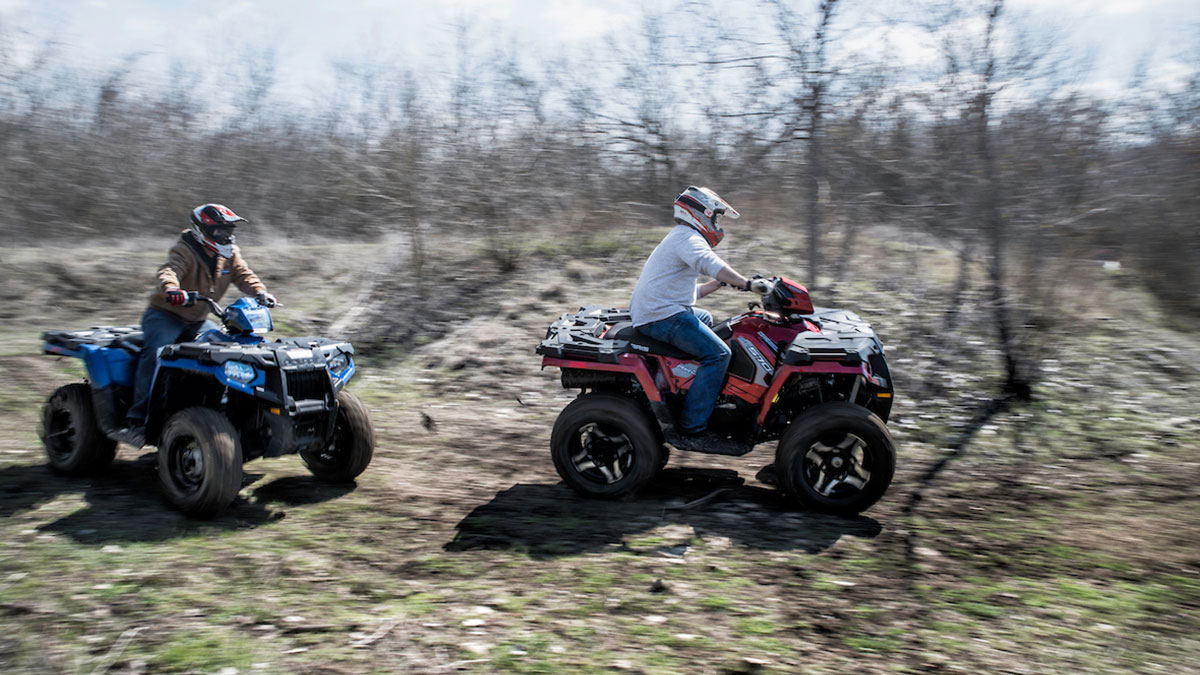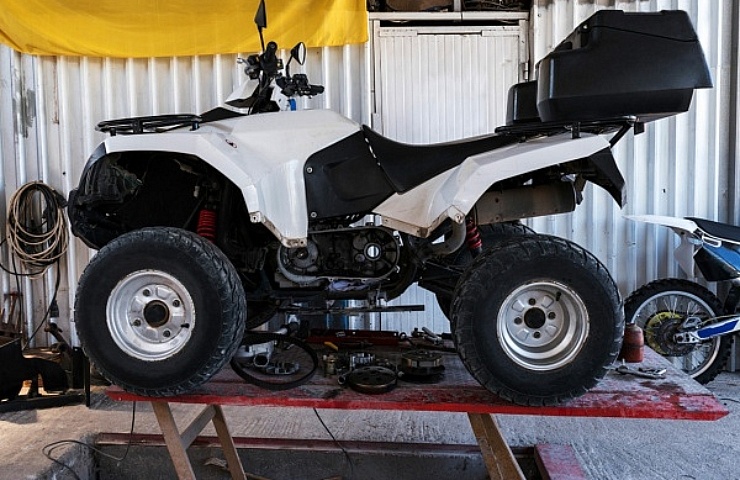ATV Enthusiasts Join: Study the Heart-Pounding Globe of Off-Road Bliss
Wiki Article
ATV Riding Strategies: Grasping the Art of Off-Roading

Body Positioning
To properly browse with difficult off-road surface, it is essential for ATV motorcyclists to constantly maintain correct body positioning. Keeping the right body placement while riding an ATV not only enhances control and security but also ensures the motorcyclist's safety. By embracing the correct body positioning methods, cyclists can successfully distribute their weight, improve their equilibrium, and decrease the risk of injuries or mishaps.Positioning the feet on the foot fixes enables the biker to maintain stability and control over the ATV. The cyclist's knees need to be somewhat curved, providing a small suspension to keep and soak up shocks equilibrium.
Additionally, the biker's eyes need to always be concentrated ahead, scanning the surface and preparing for any kind of barriers or modifications in the trail. By keeping a forward look, bikers can make instant choices and respond properly to testing terrain.
Throttle Control
Building upon the value of correct body placing for ATV bikers, understanding throttle control is a vital ability that enables motorcyclists to successfully maneuver with various off-road terrains. Throttle control refers to the ability to control the amount of power provided to the ATV's engine. By recognizing how to manipulate the throttle, bikers can make sure a smooth and regulated velocity, permitting them to browse obstacles with accuracy.Abrupt or jerky motions can create the ATV to lose grip or become unstable, making it challenging to maintain control. This strategy allows the ATV to maintain a constant speed and gives much better traction, decreasing the risk of mishaps.
In enhancement to smooth inflection, cyclists must also learn just how to stabilize the throttle with other riding methods, such as body positioning and stopping. When climbing high hills, cyclists need to apply enough throttle to keep momentum without creating or overpowering the atv wheel spin. When descending high slopes, cyclists ought to utilize the throttle in combination with correct body positioning and stopping to preserve control and avoid the ATV from sliding or tipping over.

Braking Strategies
An essential facet of ATV riding methods is grasping reliable stopping techniques. When it concerns off-roading, knowing how to brake appropriately can make a substantial difference in your safety and control over the car. One of one of the most critical stopping techniques is using the front brake more than the rear brake. The front brake offers the majority of the stopping power, so it is essential to use it carefully. It is important to remember that harsh braking with just the front brake can create the ATV to pitch forward, potentially leading to loss of control or even flipping over. It is suggested to apply both brakes at the same time, however with more pressure on the front brake. Another important technique is to stay clear of securing the wheels while stopping. Securing the wheels click to read more can cause skidding, making it hard to keep control. To avoid this, squeeze the brake levers slowly and launch them somewhat if you really feel the wheels locking. By mastering these stopping strategies, you can boost your ATV riding abilities and make certain a secure and enjoyable off-roading experience.Cornering Strategies
One important element of mastering ATV riding methods is understanding efficient cornering strategies. Cornering on an ATV can be tough, but with the ideal techniques, bikers can browse turns securely and successfully. The trick to successful cornering is to keep control of the ATV while optimizing traction and decreasing the risk of toppling.To carry out a proper cornering method, cyclists ought to come close to the turn at a proper rate, guaranteeing they are not going as well rapid or too sluggish. It is vital to shift the body weight towards the inside of the turn, leaning into it to preserve equilibrium and security. This assists to counterbalance the centrifugal force and keeps the ATV upright.
Furthermore, motorcyclists need to keep their eyes concentrated on the exit point of the turn instead of the instant course in advance (ATV). This permits for smoother and extra specific guiding, as it helps the rider anticipate any type of challenges or modifications in surface
In addition, proper throttle control plays a substantial function in cornering. Bikers should modulate the throttle smoothly, preventing unexpected velocities or slowdowns, which can create loss of control.
Uphill and Downhill Riding
When browsing off-road surface, ATV riders must master the techniques for uphill and downhill riding to keep control and ensure safety. Uphill riding calls for a mix of equilibrium, throttle control, and weight circulation. As motorcyclists ascend steep slopes, they ought to lean forward to shift their weight in the direction of the front of the ATV, which increases grip on the front wheels and protects against the lorry from turning in reverse. ATV. Furthermore, preserving a consistent throttle and avoiding unexpected velocity or slowdown assists to stop the ATV from shedding momentum or getting stuck. Downhill riding, on the various other hand, requires motorcyclists to lean back and shift their weight towards the rear of the ATV. This helps to keep stability and prevent the lorry from turning ahead. It is vital to utilize the brakes moderately and use them gradually to stay clear of locking the wheels and shedding control. Moreover, bikers need to select the path with the least obstacles, as browsing downhill can be much more tough because of the increased rate and reduced grip. By mastering the methods for uphill and downhill riding, ATV riders can confidently take on different off-road surfaces and enjoy a secure and exciting experience.Conclusion
In final thought, grasping the art of ATV riding calls for a mix of body positioning, throttle control, stopping strategies, and effective cornering. Uphill and downhill riding also visit their website require particular skills to navigate safely. By carrying out these strategies, cyclists can boost their off-roading experience and boost their total control and safety on the her response ATV.ATV Riding Techniques: Understanding the Art of Off-Roading is a comprehensive guide that delves into the intricacies of mastering the abilities needed for off-road ATV riding. Whether you are a newbie or a seasoned cyclist, ATV Riding Techniques: Understanding the Art of Off-Roading uses crucial suggestions to aid boost your off-road ATV riding abilities to the following level.

Report this wiki page